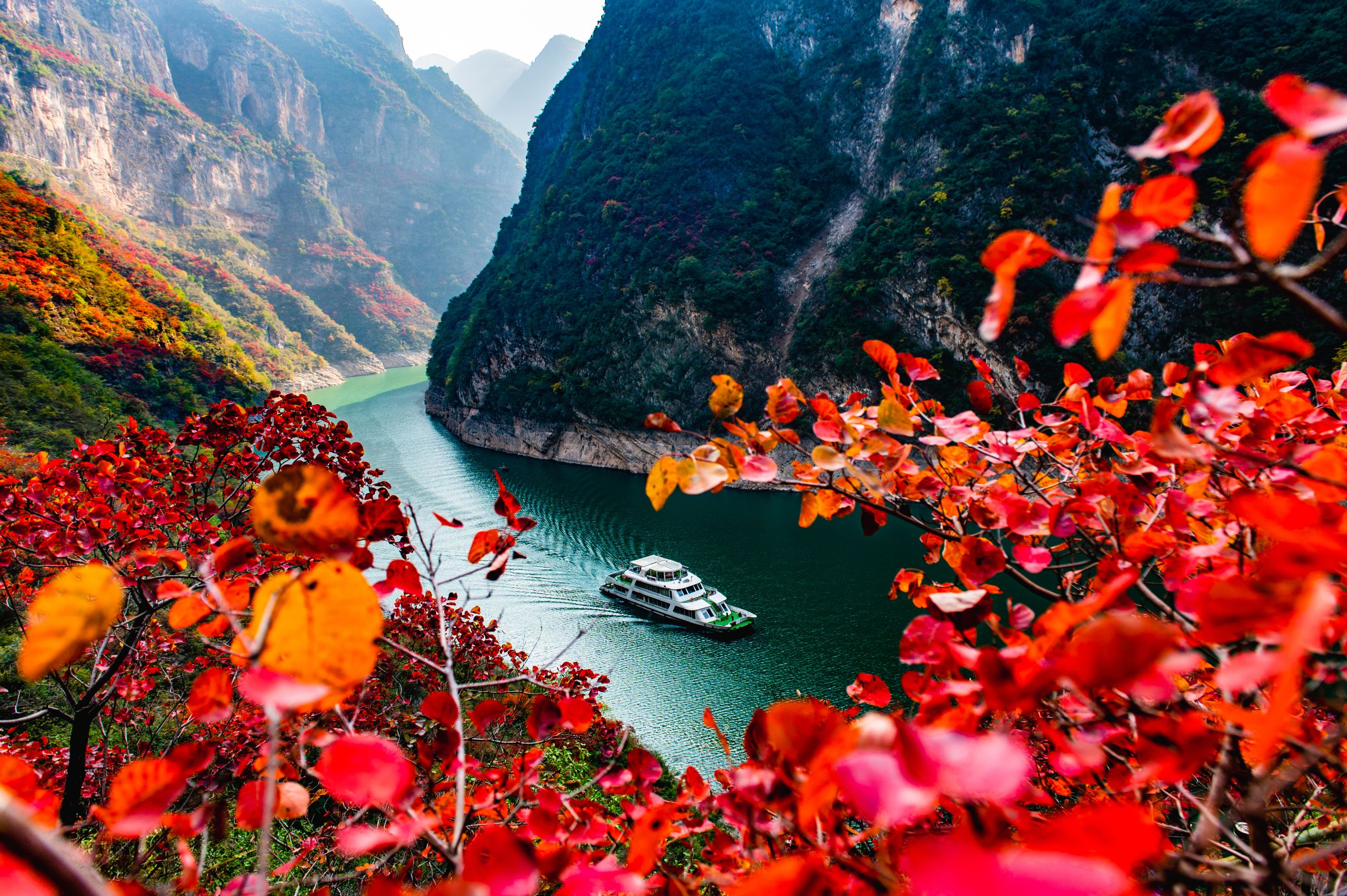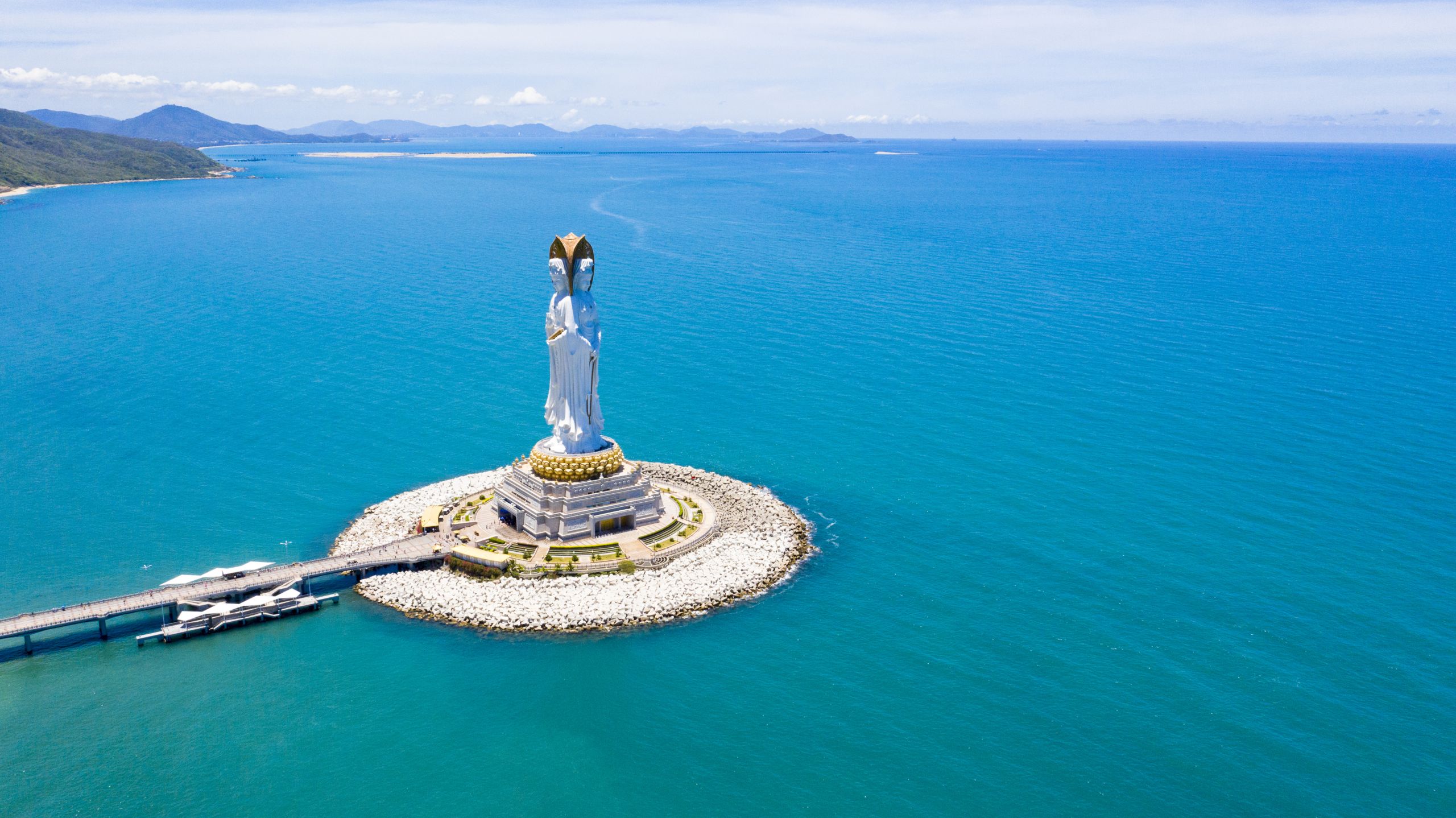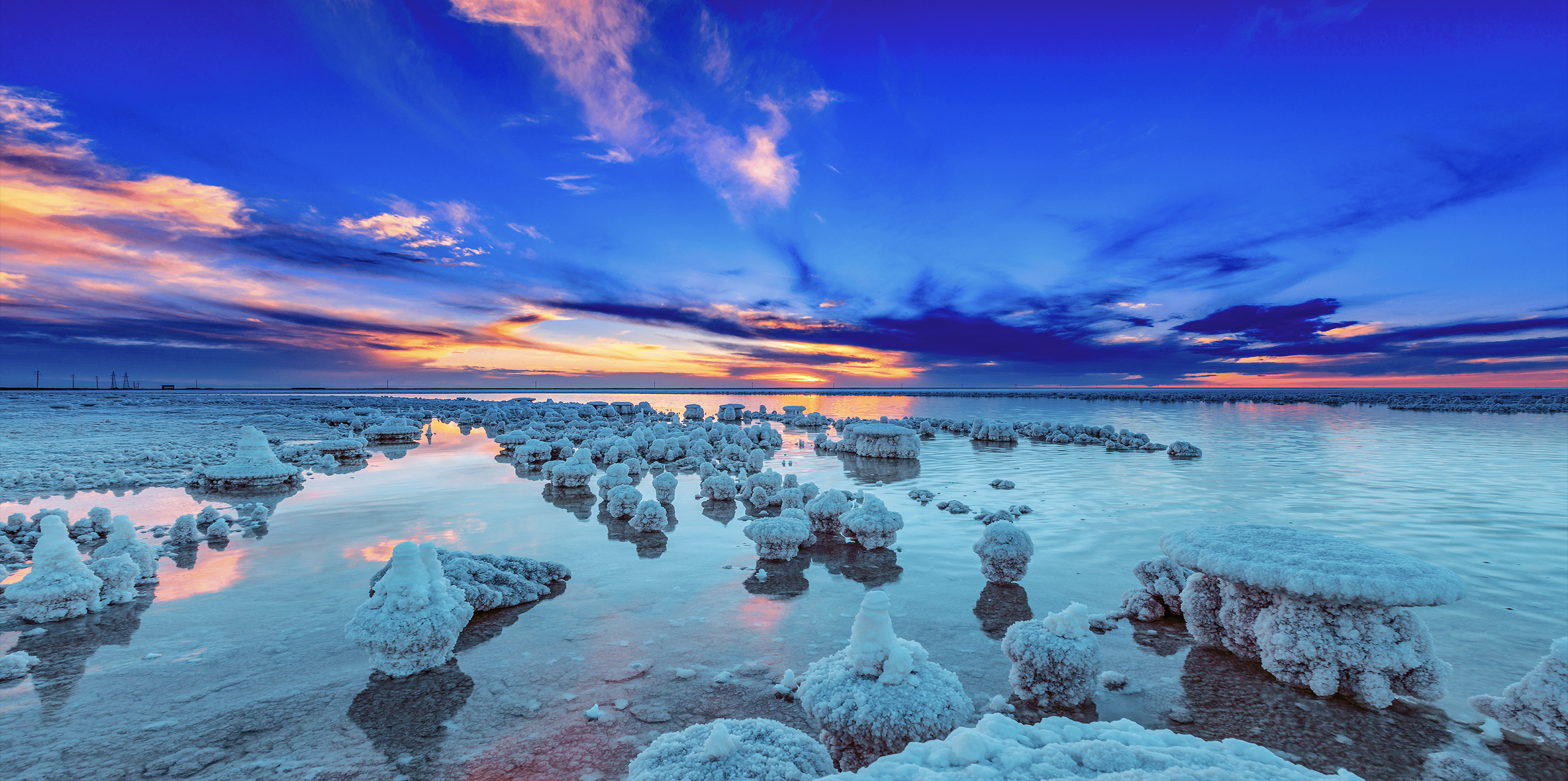
World Travel Market 2025: Wandering in China and Witness the Beauty of Nature
(Source: Nouvelles d’Europe)
At the China Pavilion of the 2025 World Travel Market in London, visitors can quite literally “walk through” the country’s sweeping landscapes and cultural sanctuaries. From Hainan to Qinghai, Sichuan to Guizhou, and onward to Xinjiang, each region unveils its own constellation of mountains, lakes, coastlines, snow peaks or deserts—together portraying a China where natural wonders and ancient traditions flourish side by side.

Hainan: A Tropical Haven Where Sea Breezes Whisper Through the Palms
Blessed with eternal spring and abundant sunshine, Hainan is a dreamy tropical island where more than 60% of the land is cloaked in rich forest. Its 2 million square kilometres of maritime territory, nearly 2,000 kilometres of coastline and luxuriant rainforests create a dazzling mosaic of bays, headlands and islets.
Human activity here began over ten millennia ago, and the island has been home to the Li people for more than 3,000 years—creators of Li brocade, now inscribed as UNESCO intangible cultural heritage. Confucian, Buddhist and Daoist traditions have also mingled here, shaping an unusually diverse spiritual and cultural landscape.
Over the past forty years, Hainan has blossomed into one of the Asia-Pacific’s most coveted island destinations, home to internationally renowned resorts in Yalong Bay, Haitang Bay, Sanya Bay and Shimei Bay. The island specialises in ten star tourism themes—from ocean travel and wellness to aerospace, live performance and sport—with attractions such as the Tropical Rainforest National Park, Evergrande’s Ocean Flower Island and Funworld Fuli Ocean Park.
Hainan is well connected to the world with more than 300 international routes, including flights linking Haikou with London.

Qinghai: A Hidden Realm of Beauty on the Roof of the World
Set on the northeastern edge of the Qinghai–Tibet Plateau, Qinghai takes its name from China’s largest inland saltwater lake—Qinghai Lake. Sitting at an altitude of 3,200 metres, this vast expanse of blue mirrors the grasslands, wetlands, deserts and mountains that surround it.
The Kunlun Mountains, the legendary cradle of many Chinese creation myths, cut boldly across western China. The Tongtian River, one of the sources of the Yangtze, rushes through lush highland pasture, while Madoi County—known as the “source of the Yellow River”—is home to more than 5,800 lakes.
The Qaidam Basin is a land of surreal treasures: the Chaka Salt Lake forms shimmering, otherworldly salt crystals, while the Wusute Yardang Geopark bristles with wind-eroded stone towers that feel more like a Martian landscape.
High-altitude wildlife thrives here—wild yaks roam at over 4,500 metres; black-necked cranes glide above alpine marshlands; and the Zhonai Lake of Hoh Xil remains a sanctuary for Tibetan antelopes. Even the alpine snow lotus, clinging to bare rock where few plants can survive, flourishes in this harsh environment and is prized for its rare medicinal qualities.

Sichuan: A Land of Leisure, Legend and Living Wonders
Cradled in southwest China, Sichuan—the Land of Abundance—has long been celebrated for its fertile plains, majestic landscapes and warm lifestyle. Listed by Lonely Planet as one of Asia’s top ten travel destinations, it is a region shaped by dramatic geological contrasts: Mount Gongga soars to 7,508.9 metres, while the Yulin River Gorge dips to just 188 metres. This extraordinary range has created one of the richest ecosystems on Earth, earning Sichuan a place among the WWF’s global top ten biodiversity hotspots. British botanist Ernest Henry Wilson famously called it “the Mother of Gardens”.
Sichuan boasts five UNESCO World Heritage Sites—three natural, one cultural and one mixed.
- Giant Panda Sanctuaries – home to over 80% of the world’s wild pandas.
- Jiuzhaigou Valley – a dreamscape of rainbow lakes and dramatic waterfalls.
- Huanglong – famed for its sinuous calcite pools and pristine wetlands.
- Dujiangyan & Mount Qingcheng – an ancient irrigation miracle alongside one of Daoism’s birthplaces.
- Mount Emei & Leshan Giant Buddha – a Buddhist sacred mountain paired with the world’s largest sitting Buddha, carved 1,200 years ago.
Sichuan’s four signature cultural identities paint a vivid picture:
- The Land of Abundance – celebrated since ancient times for its cultural and natural riches.
- Home of the Giant Panda – the world’s largest habitat and breeding programme.
- Cradle of Shu Civilisation – with Sanxingdui’s extraordinary gold and bronze artefacts hailed as a “great archaeological discovery of the 20th century”.
- Leisurely Sichuan – where the philosophy of “fast development, slow living” comes alive in teahouses, Sichuan opera and a celebrated culinary tradition.
A journey into Sichuan is a journey into colour, flavour and culture—natural beauty paired with a uniquely gentle rhythm of life.

Chongqing: A Surreal Mountain Metropolis Carved by Mighty Rivers
Chongqing—the largest and most populous of China’s municipalities—boasts more than 3,000 years of history, yet has become one of the most beloved urban playgrounds for China’s younger generation. Global agencies have named it one of the world’s fastest-growing travel destinations and one of the globe’s top ten emerging cities.
Often compared to a real-life “cyberpunk” city, Chongqing rises in dramatic layers. Visitors can explore the glowing cliffside complex of Hongyadong, watch a monorail train pass straight through a residential tower, cross the Yangtze by cable car, or cruise along the two rivers that embrace the city.
Nature, too, displays its grandeur here. The Three Gorges—Qutang, Wu and Xiling—form the Yangtze’s most spectacular stretch. Along its cliffs and valleys stand ancient temples, cliffside villages and heritage sites: the mystical Fengdu Ghost City, the gravity-defying Shibaozhai, the Zhang Fei Temple and the Wushan Longgupo archaeological site.
Chongqing is home to three UNESCO World Natural Heritage Sites—Wulong Karst, Jinfoshan (Golden Buddha Mountain) and Wulipo in Wushan. Wulong is a world of sinkholes, stone bridges and vast caves; Jinfoshan glows gold in the setting sun like a mountain-sized Buddha; and Wulipo remains an untouched sanctuary of rare flora and fauna.
Dazu Rock Carvings, created between the 9th and 13th centuries, are among the world’s greatest works of cave art.
In Wuling Mountain, ethnic Tujia and Miao communities live among river gorges, ancient towns and tranquil hill country—evoking a pastoral beauty reminiscent of Tao Yuanming’s fabled Peach Blossom Spring.
By August 2025, Chongqing will operate 33 international routes with 240-hour visa-free transit for citizens from 55 countries, making it a gateway city as bold as it is beautiful.

Shandong: The Soul of Mount Tai and the Heartland of Confucius
Located between Beijing and Shanghai on China’s east coast, Shandong spans 158,000 square kilometres of land and sea. It is the birthplace of Confucianism and a cradle of Chinese civilisation, often honoured as “the home of Confucius and Mencius, and the land of propriety”.
Mount Tai, the most revered of China’s Five Sacred Mountains, symbolises national peace and prosperity and holds the distinction of being the world’s first mixed natural and cultural World Heritage Site. In Qufu, the hometown of Confucius, the “Three Confucian Sites”—the Temple, the Mansion and the Cemetery—remain immaculately preserved.
The Yellow River, “the mother river of the Chinese people”, flows into the sea here, creating a majestic meeting of blue and gold. Its estuarine wetlands are a UNESCO Natural World Heritage Site.
Jinan, the provincial capital, is known as the “City of a Thousand Springs”, where ancient charm and modern vitality flow together. Coastal Qingdao—famed for its beer and for hosting the 2008 Olympic sailing events—remains one of China’s most beloved seaside destinations.
Shandong’s people are celebrated for their warmth, sincerity and hospitality, upholding Confucius’s timeless welcome: “How delightful it is to have friends come from afar.”

Guizhou: A Land of Waterfalls, Karst Peaks and Living Traditions
Tucked deep within southwest China, Guizhou is a province of mountains and valleys—more than 90% of its terrain is hilly or rugged, making it the only Chinese province without a plain. Its pristine ecosystems and rich ethnic cultures give it an unmatched character.
Guizhou has more UNESCO natural heritage sites than anywhere else in China and is affectionately known as “the province of a thousand waterfalls”. Huangguoshu Waterfall roars in magnificent cascades; Anshun’s Dragon Palace is China’s most breathtaking water-filled karst cave; Maling River Canyon, with its soaring cliffs and countless waterfalls, is called “the most beautiful scar on Earth”; and the Wanfenglin Peak Forest resembles a vast museum of karst spires.
Eighteen ethnic groups live here, each with distinctive traditions. Miao and Dong villages such as Langde, Zhaoxing and Basha preserve ancient wooden homes, rituals and lifestyles. Basha, famous for its people’s reverence for trees, is often described as a “living fossil of Miao culture”.
Rural sports festivals such as the wildly popular “Village Basketball Association” (Village BA) and “Village Super League” (Village Super) reflect Guizhou’s joyful and spirited local life.
And, of course, this is the homeland of Maotai, China’s most famous spirit.
Guizhou, with its poetic landscapes and vibrant cultures, is a world of natural splendour and human warmth.

Xinjiang: Vastness, Vitality and the Call of the Silk Road
Stretching across China’s far northwest, Xinjiang lies deep in the heart of the Eurasian landmass. The Tianshan Mountains divide it into northern and southern realms; the Kunlun and Altai ranges tower above the Tarim and Junggar basins. Snow ranges, deserts, oases and lakes create a landscape of epic scale.
The Tarim River winds for a thousand kilometres; Bosten Lake glimmers beneath boundless skies. Abundant solar, wind and fossil energy resources make Xinjiang a powerhouse of China’s modern Silk Road.
Each season paints a new palette:
- spring blossoms across the Nalati grasslands,
- summer brings the sapphire lakes of Sayram and Kanas,
- autumn glows with golden poplars and orchards heavy with fruit,
- winter transforms Altay into a skiing paradise.
For centuries, Xinjiang was the beating heart of the Silk Road. Ruins of Loulan, Jiaohe and Gaochang echo with stories of civilisations long gone. The murals of the Kizil Caves, the Twelve Muqam musical suites and the Epic of Manas showcase the region’s deep, multi-ethnic cultural roots.
Known as “the land of fruits”, Xinjiang is famed for grapes, pomegranates and Hami melons. Its cuisine—naan, kebabs, da pan ji (spicy chicken) and pilaf—tells stories of grasslands, bazaars and desert caravans.
With its majestic landscapes and rich cultural tapestry, Xinjiang welcomes the world to experience the vastness and warmth of the land north and south of the Tianshan Mountains.





